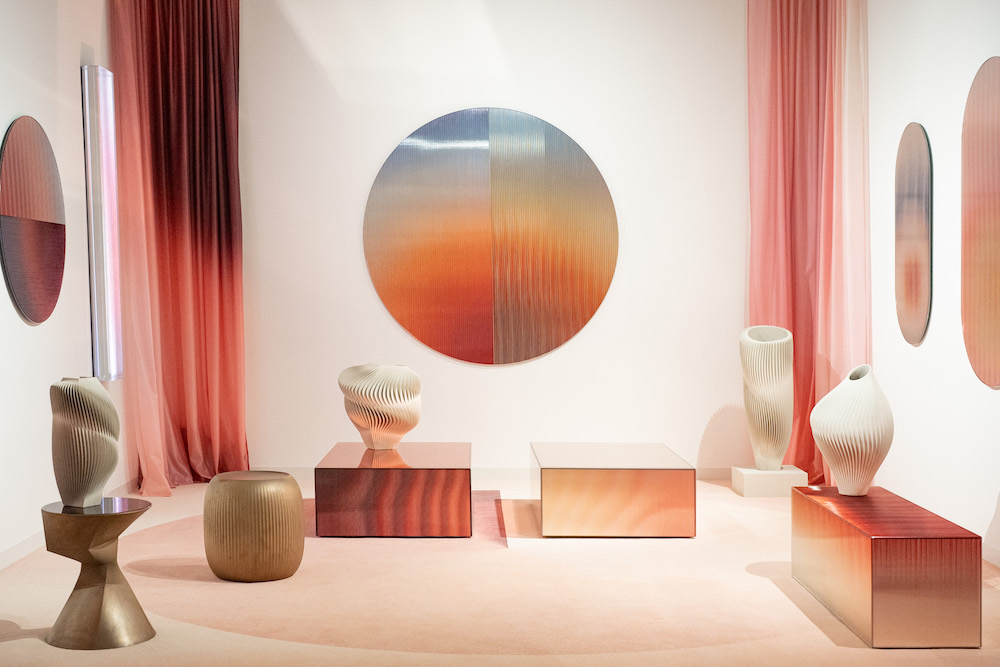Issa Rae gained fame for earnestly embracing her awkwardness. During her childhood in Maryland and Los Angeles, she adapted to her surroundings by adopting new identities. She sensed projections from peers about what they thought was appropriate for her as a black female, and this greatly influenced her professional creative pursuits. After attending Stanford University, she acted in New York and wrote the book and subsequent Web comedy series The Misadventures of Awkward Black Girl. Since then, Rae has gone on to create, co-write, and star in HBO’s Insecure, which earned a Golden Globe nomination for Best Actress in a TV Comedy or Musical last year and this year, too.
Rae recently hosted Bombay Sapphire’s eighth annual national Artisan Series competition during Art Week 2017 in Miami Beach. Since its inception, the tournament has welcomed over 38,500 submissions, allowing artists to showcase their works at SCOPE Miami Beach and compete for a grand prize—a solo booth at the fair and an exclusive collaboration with Artsy.
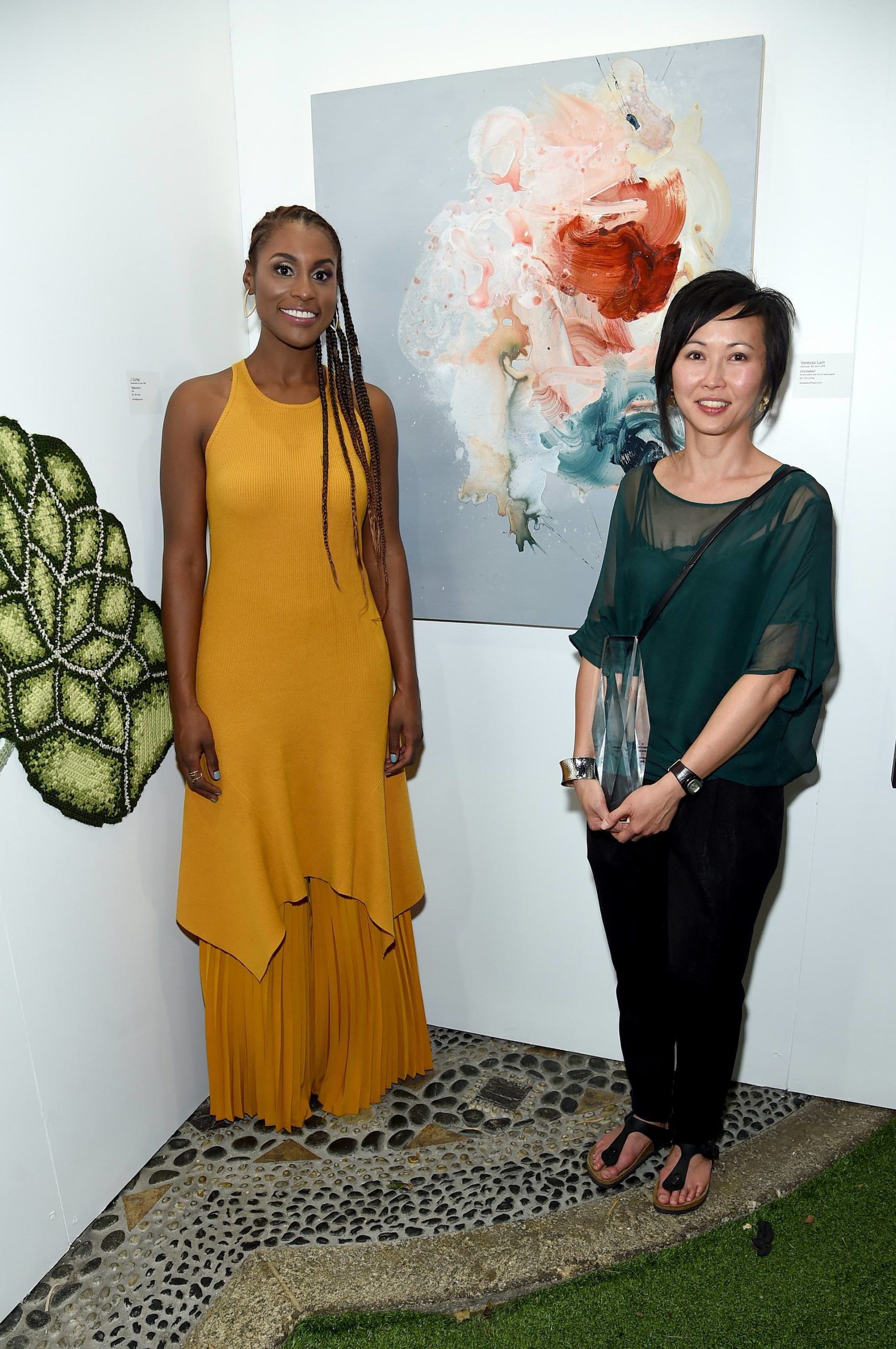
Photo by Jamie McCarthy for Getty.
Courtesy of Bombay Sapphire.
In Miami before the competition, Whitewall spoke with Rae about art, self-love, and pushing the reset button.
WHITEWALL: Tell us a little bit about your role in this year’s Bombay Sapphire Artisan Series.
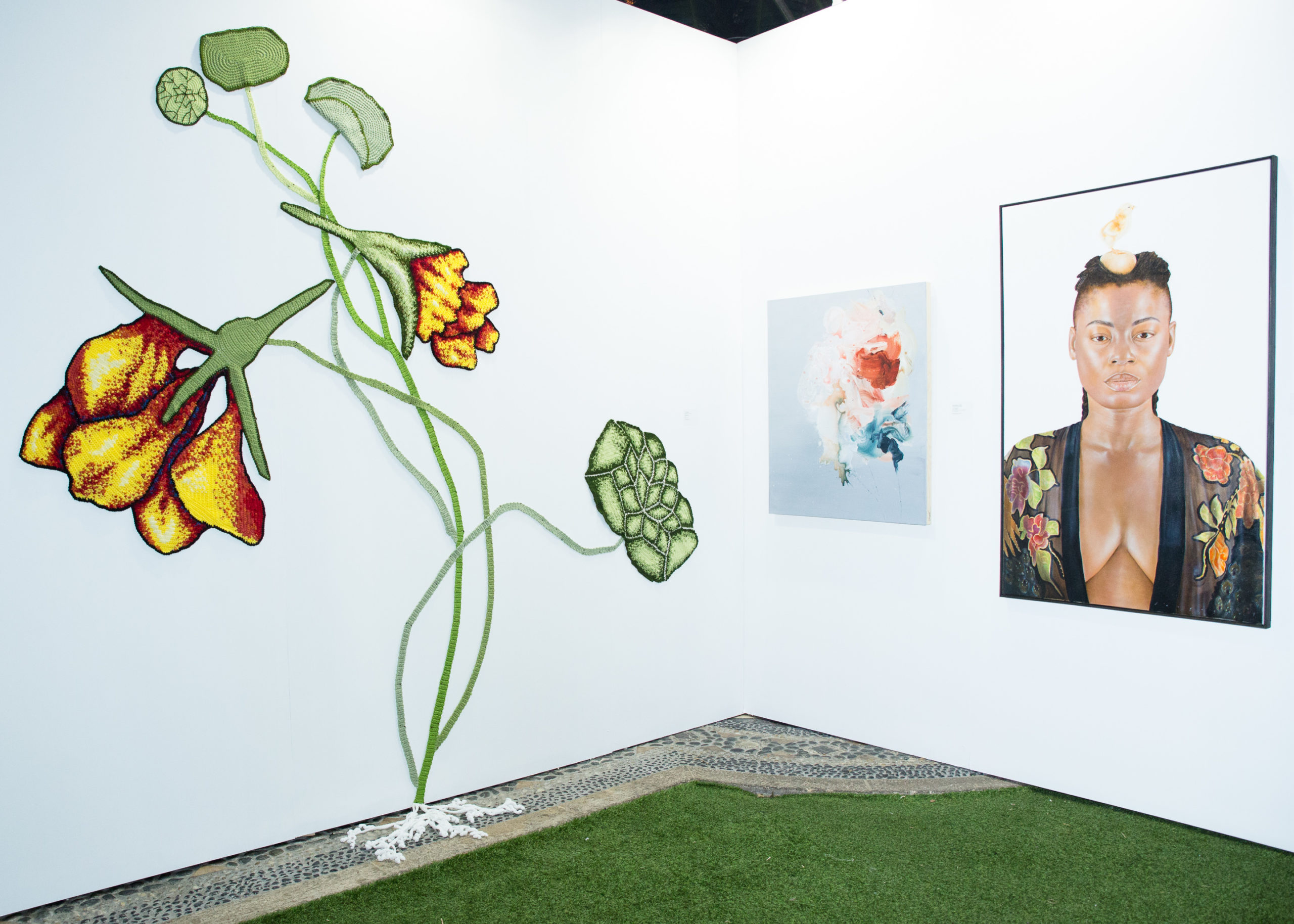
Photo by Samantha Deitch for BFA.
Courtesy of Bombay Sapphire.
ISSA RAE: I’m hosting the finalist party. I’m super-excited to just be a part of it! I get to announce the winner. They reached out, and I was lucky enough to participate. Some of the work that I’ve done has been promoting other artists—artists of color and minority women, specifically—and I felt like our missions aligned in terms of trying to find emerging artists and talent in this specific world.
WW: What about art is exciting to you right now?
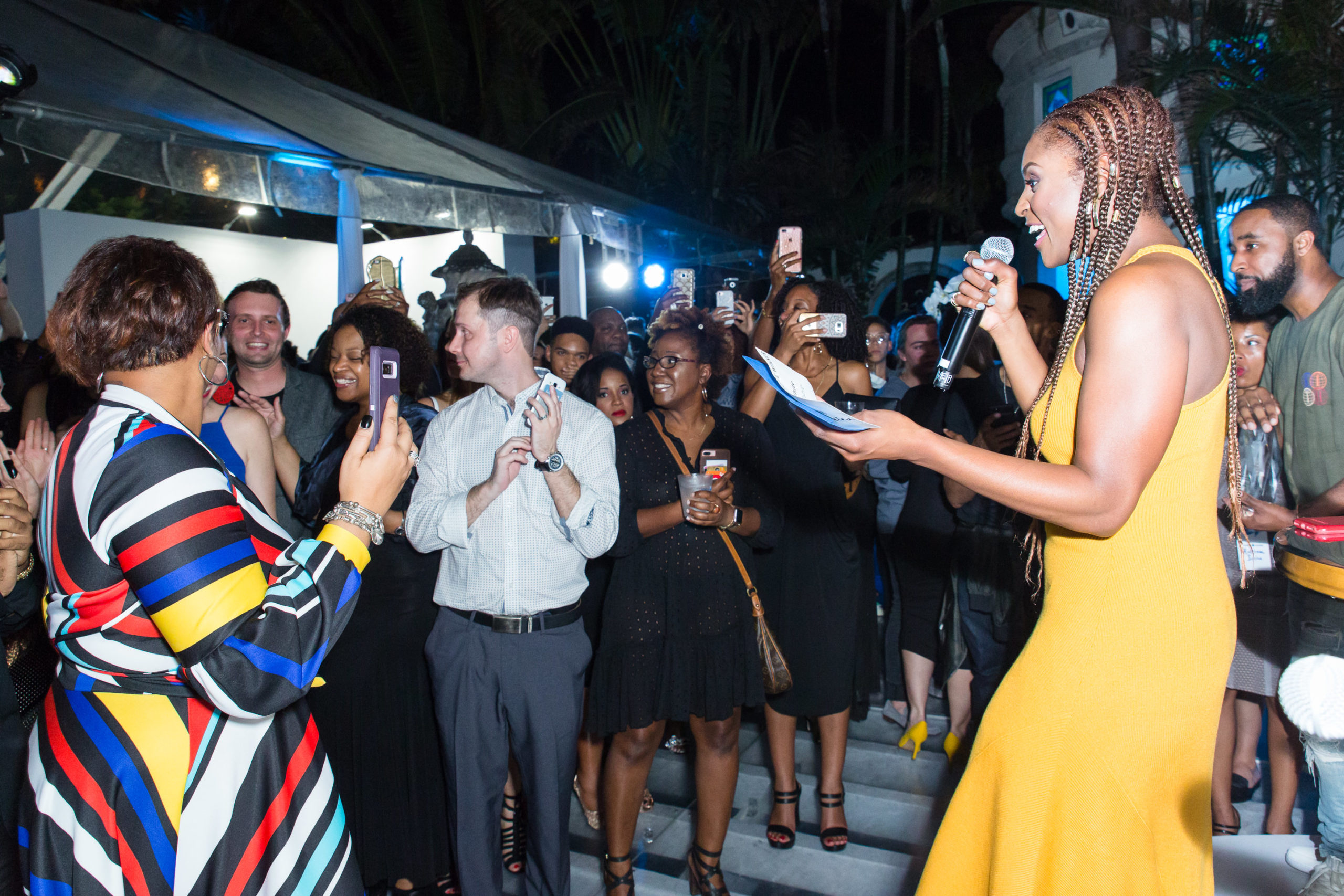
Photo by Samantha Deitch for BFA.
Courtesy of Bombay Sapphire.
IR: My late aunt actually pulled me into the art world. She was an artist and very much encouraged her nieces and nephews to explore their creative side. She gave us tools early on. She was always giving us pencils and pads of paper, and markers and crayons and paint. She really encouraged this path into what we felt emotionally, and was always a huge supporter from the sidelines. And I have no doubt that that translated into me pursuing my creative profession. What I love about the artist’s world is that there are so many forms to express yourself. And that takes shape in so many different mediums, and it is extremely subjective and so personal. There’s such an emotional connection you can have viewing something that’s so personal to someone else. That’s the most fascinating part to me—taking ownership to a degree of someone else’s expression.
WW: Do you see the creative world becoming more accessible or inclusive?
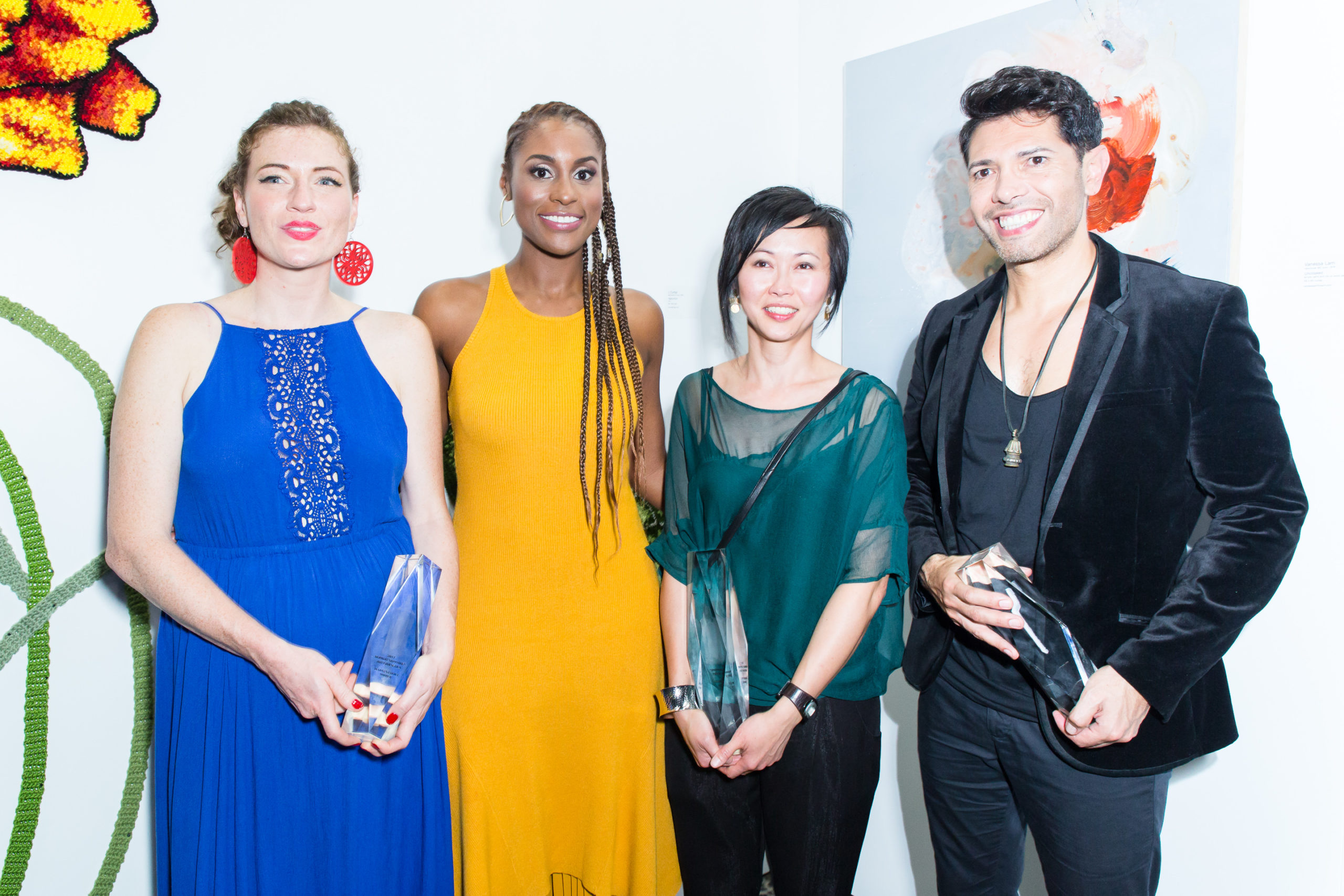
Photo by Samantha Deitch for BFA.
Courtesy of Bombay Sapphire.
IR: Yeah, it’s absolutely becoming more inclusive. I think there’s more conversation around it. I don’t want to say it’s always been embraced, but it’s always been culturally relevant. And I think there’s been, in recent years, a threat of taking certain art forms away—whether it’s in school or in certain programs—and I think it’s so important to continue to hold these programs up. And hold opportunities like these up. And to celebrate art in every form, because it is a reflection of our society at the end of the day. These pieces, these showcases, this work—these are the things that we look back on throughout history to define a time.
WW: You’ve said in the past that a piece of advice to women of color struggling with that “awkward” phase is to just embrace it. How did you grow into accepting and embracing that moment of awkwardness that’s led to your success?
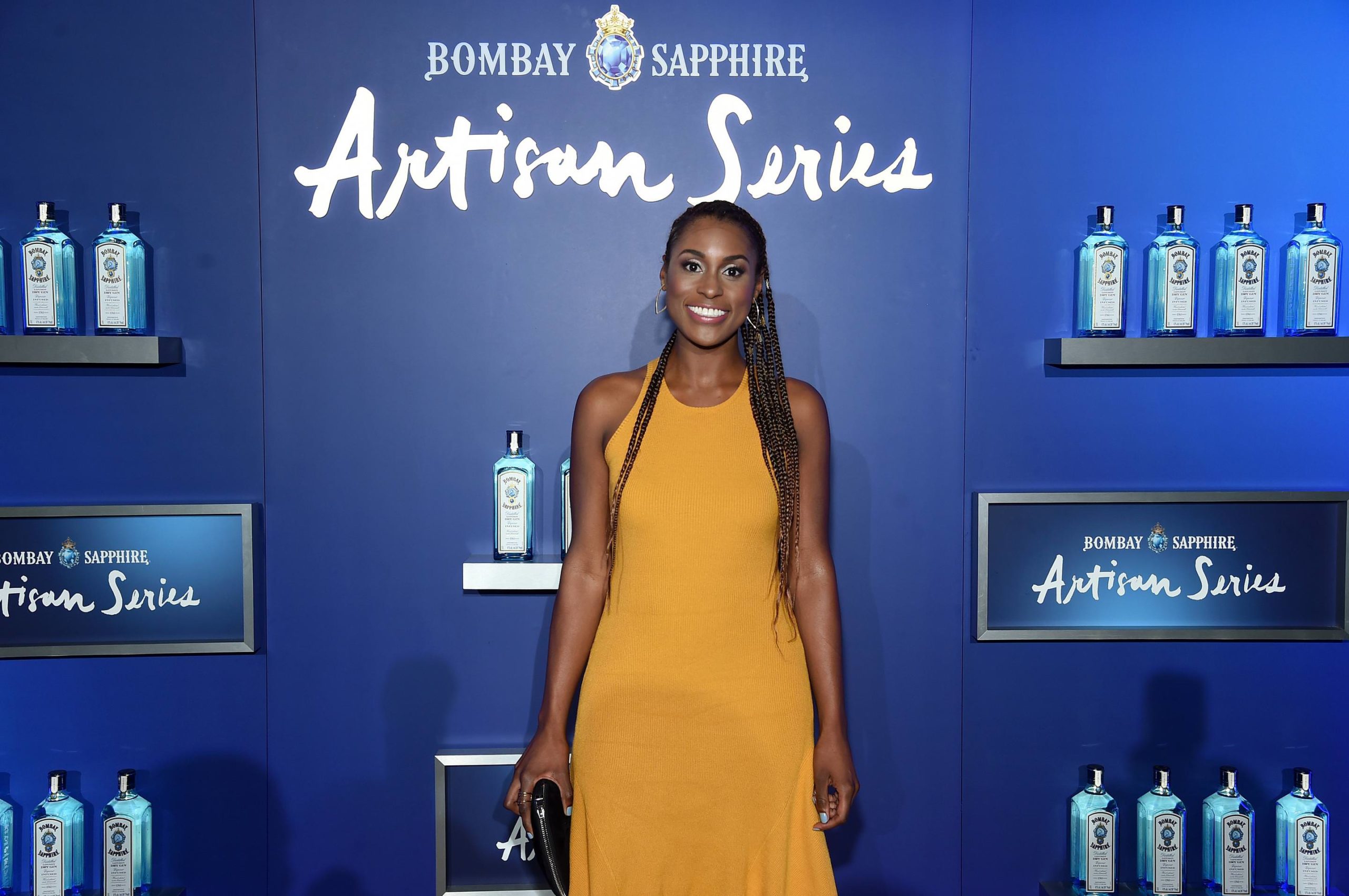
Photo by Jamie McCarthy for Getty.
Courtesy of Bombay Sapphire.
IR: The center to anyone’s journey is self-love. That’s the key. And for me, embracing my awkwardness is a form of self-love. That is what makes me who I am, and I like who I am. I’m proud of the journey that I’m on. The more and more I acknowledge that within myself, I have found it is easier to embrace all of the flaws that make me me. We’re in an era where people appreciate all of the flaws and authenticity so much, as long as there’s an aspect of truth. That to me is what is driving the art of our culture currently—and it shows with who’s behind the scenes and who’s telling these specific stories. People want to know that it is coming from a real place, a place of truth.
WW: Is there any aspect of the practice of being a visual artist that you relate to?
IR: The blank slate. I think it’s definitely the most intimidating element. Just starting. You ask, “What am I going to fill this with?” or, “Will it even be good enough?” and, “Will it make the impression that I want it to make? What is the impression that I even want to make?” There are so many questions with a blank page, or a blank canvas, that I feel any artist can relate to. The possibilities are endless.
WW: When do you come to the conclusion that you’ve achieved whatever it is that you’re looking for, and you decide to stop? When do you know it’s good enough for you?
IR: You feel a sense of completion. To be honest, and I can only speak for myself, there’s always that question of “Could I have done more?” But overall, there’s a sense of “Okay, I’ve done enough”—or at least enough to showcase it. And the next project that I take on will have different elements. There’s a sense, though, where you can feel it is complete, and when you can’t make it any better, or there’s nothing you’d want to add that will get the message across more in a way than it already is right now. Sometimes you can overdo.
WW: You’ve made a number of lists, including: Glamour magazine’s “35 Under 35,” Forbes’s “30 Under 30,” and Entertainment Weekly’s “Breaking Big.” How have success and accolades like these shaped you?
IR: They haven’t, really. It’s great to have acknowledgement, I will say that. It’s always a great feeling to know that people appreciate the work or that they’re paying attention. But at the same time, you long for the days where they weren’t because it makes you less inhibited to a degree. Sometimes I find myself thinking about the audience in ways that I didn’t before, and there’s just a luxury of people not having any expectation that I have to tap into sometimes and remind myself, “Oh, remember the days you created and didn’t consider the audience, and you were just creating?” For me, that’s where I try and reset and focus—with every new project or every new season I take on.
WW: How do you reset?
IR: I have a lot of conversations with myself and other people. And I always have to remind myself, from project to project, what I’m specifically trying to get across independently from anyone else. I tap into myself as much as possible.





